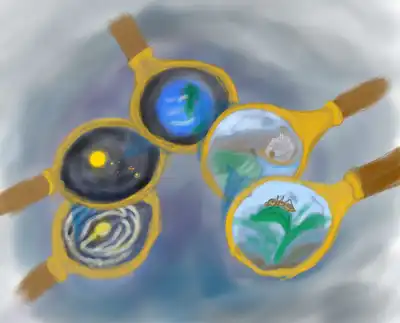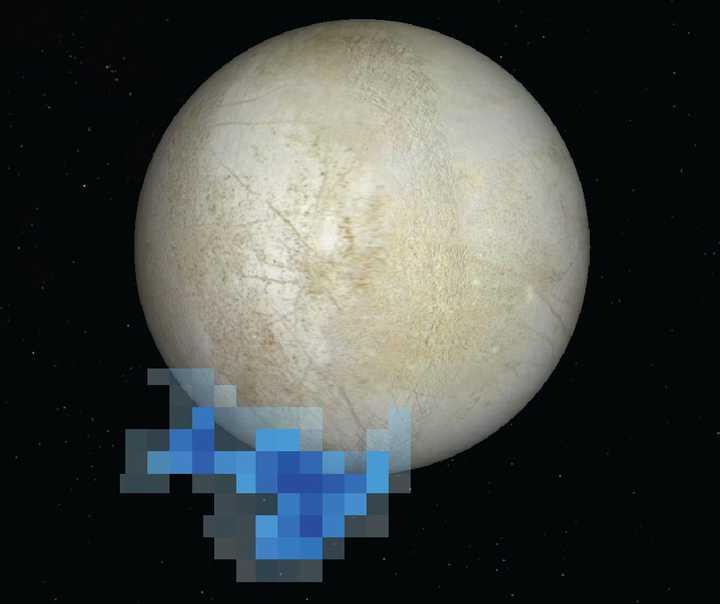
The Simplicity of Everything
A concise introduction to cosmology and the theory behind it.

When the Hubble Space Telescope looked into a tiny part of our night sky, it found tens of thousands of galaxies, each containing millions of stars and billions of planets. How can we believe that life could evolve only on one planet revolving around an ordinary sun in an ordinary galaxy?
As soon as we realised the immensity of our cosmos, a realisation unfolded that there could be life elsewhere as well. For life as we know it, the essential criteria is liquid water and oxygen. To fulfil these criteria, the temperature of a planet should be warm enough. So, a planet should be in a habitable zone from its star, neither too close (too hot) nor too far (too cold). Basically, the planet should be earth-like.
The now retired famous Kepler Telescope’s main mission was to find earth-like planets in distant regions of our galaxy. This telescope is now replaced by the advanced Transiting Exoplanet Survey Satellite (TESS) telescope. The search for earth like planets is ongoing.
While looking for earth-like planets and signs of life in distant regions of our galaxy, we should not forget our own solar system. Indeed, scientists have been looking for signs of liquid water beyond Earth, especially within our solar system. Although most planets in our solar system appear to be barren for liquid water, some exciting news came from moons of these planets. Saturn’s moon Enceladus was confirmed to harbour water and even organic molecules (similar to ones found in our bodies). More recently, water vapour was also confirmed on Jupiter’s moon Europa.

This image, taken by NASA’s Cassini spacecraft, shows Jupiter in a near-infrared wavelength, and Europa, one of Jupiter’s largest moons, passing across. Credit: NASA/JPL/University of Arizona.
On 8th January 1610, the famous Italian astronomer Galileo Galilei was observing Jupiter with his 20X magnification telescope when he first discovered Europa and three other moons of Jupiter. Since then many spacecraft and telescopes observed Europa and collected intricate details about its surface.
When the Voyager spacecrafts captured images of Europa in the 1970’s, the presence of an icy outer surface was established. In 1998, data from the Galileo spacecraft images confirmed the presence of icebergs on Europa. Scientists then speculated that there might be liquid water beneath these icebergs. The simple logic was that if ice was on the surface, it would insulate liquid water beneath it. Then in 2012, this speculation was reinforced by data from the Hubble Space Telescope which suggested the presence of hydrogen and oxygen over the south pole of Europa. This was speculated to be water vapour that was coming from vents on the moon’s icy surface that could be leading to a massive subsurface ocean of liquid water.

This graphic shows the location of water vapour detected over Europa’s south pole in observations taken by NASA’s Hubble Space Telescope in December 2012. This is the first strong evidence of water plumes erupting off Europa’s surface. Credit: NASA/ESA/L. Roth/SWRI/University of Cologne.
In November 2019, scientists for the first time reported direct measurement of water vapour using near-infrared spectroscopy. A near-infrared spectrometer can detect infrared light coming from atoms and molecules. Every molecule, due to its chemical composition absorbs sunlight and emits unique signatures of infrared light. Water and water vapour also emits a unique signature of infrared light after absorbing sunlight. By pointing the large telescope at the W. M. Keck Observatory in Hawaii towards Europa, scientists directly measured water vapour over the surface of Europa.
Surprisingly, however, of the 17 days these daily observations were made, they could find emissions of water vapour only on 1 day. This led the scientists to believe that the emission of water vapour plumes was a rather rare and perhaps isolated occurrence. Nevertheless, water vapour was measured and more importantly this reinforces the speculation that there could be a subsurface ocean.
Future missions to Europa have already been planned by NASA. The upcoming James Webb Space Telescope will be able to more sensitively detect water vapour. We need to drill the surface of Europa and confirm the presence of water. The Europa Clipper and JUpiter ICy moon Explorer (JUICE) missions will be launched around 2030 and will give us more information about the subsurface of Europa. What might be swimming in there? I am looking forward to it. What about you?